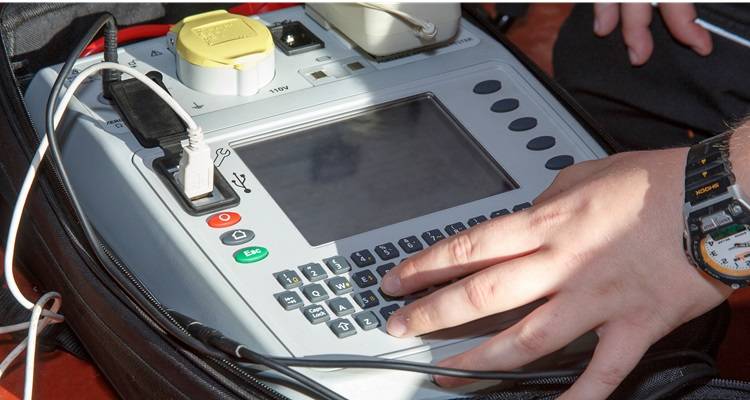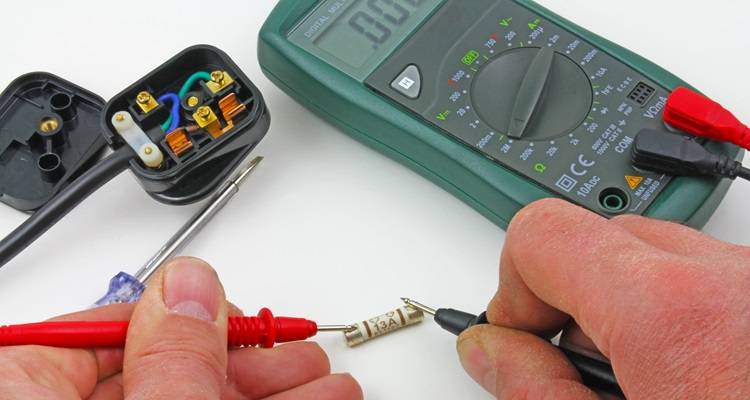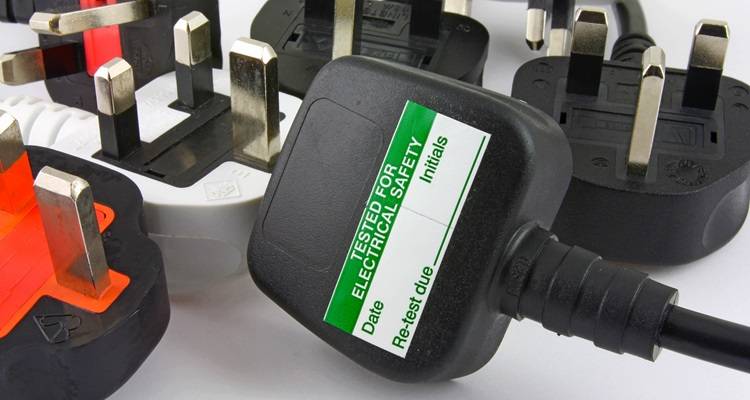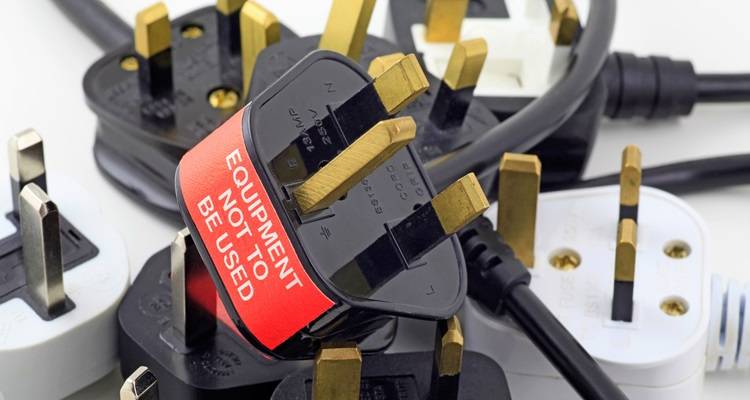How to Become a PAT Tester
Can anyone PAT test? Do you need to be qualified to PAT test?
With so much information available, it can be hard to decipher the facts from the jargon when it comes to PAT testing (Portable Appliance Testing).
PAT testing is integral to any electrician’s job, from testing day-to-day appliances like kettles and toasters to industrial-sized equipment in laboratories or medical theatres.

So, whether you’re a newly qualified electrician looking to expand your skills and services offered by getting a PAT testing qualification, a tradesperson looking to add more offerings to your business, or simply non-tradespeople who are interested in getting qualified to perform PAT testing, this article will help you understand all there is to know about PAT testing.
Let’s dive in.
Table of Contents
- PAT testing stands for Portable Appliance Testing.
- PAT testing comprises two parts: a visual inspection for visual issues and a manual test to pick up “invisible” electrical malfunctions.
- Electrical items can be split into three categories: Class 1 (with a higher risk of harm), Class 2 (with more insulation and a lower risk to Class 2), and Class 3 (very low voltage).
- Anyone can technically perform a PAT test, but qualified electricians are recommended for high-risk environments with large equipment.
- The Electricity at Work Regulations of 1989 states that employers and landlords have a duty to keep electrical equipment with the potential to cause harm in a safe condition and well-maintained with routine PAT testing.
What Is PAT Testing?
Portable Appliance Testing–PAT testing–is the process of examining and testing electrical appliances and equipment to ensure they are safe to use.

This process takes the following steps:
- A visual examination of the electrical appliance to identify any visible issues (sparks, loose wiring, smoke/heat damage, etc.).
- A manual test of the electrical appliance to pick up any “invisible” malfunctions.
PAT testing is an important part of routine electrical housekeeping, and The Electricity at Work Regulations of 1989 states that employers and landlords who have “electrical equipment that has the potential to cause injury [should be] maintained in a safe condition.”
Electrical items can be divided into three categories: Class 1 (with basic insulation, most likely to cause harm, such as kettles, toasters, and fridges), Class 2 (with additional insulation, such as lamps and hairdryers), and Class 3 (very low risk, such as laptops and cameras).
The HSE suggests that Class 1 electrical items should be tested every one to two years and visually inspected every six months. Equipment with higher risks–such as construction equipment–should be checked more regularly to ensure safety.
Who Can Do PAT Testing?
Can anyone PAT test? Technically speaking, yes–any competent person with the necessary training and knowledge can carry out a PAT test, but those with specific PAT testing training will be best suited to the task.
The legal requirements state that the person carrying out the PAT test must be competent and have adequate training with “instructions to perform the checks in a safe manner.” This means that companies can use their own employees to PAT test equipment if they have taken a training course and are fully certified instead of hiring an outsourced team.
That said, the type of environment will dictate the right person for the job. In low-risk environments, a competent person with the right training can visually inspect everyday items such as kettles and toasters. A qualified professional is recommended in high-risk environments such as laboratories, kitchens, and medical facilities.
What Does A PAT Tester Do?
PAT testing comprises two sections: a visual check and a manual inspection.
PAT Testing Visual Check
Before any manual inspection, the individual should perform a visual check on the electrical item when disconnected from the power supply. This is to check for:
- Cracks in the appliance, wire, or plug.
- Burns or burn residue/smoke residue on the appliance, wire, or plug, which may indicate an issue.
- Loose wire connections between the appliance and the plug, with frayed or clearly disconnected wires.

Further, it is also essential to check the surrounding area where the appliance operates. The following should be considered:
- If the equipment is plugged in appropriately, not “daisy chained” from extension cord to extension cord or laying on the ground, presenting a trip hazard.
- If there is adequate ventilation/cooling systems to prevent the equipment from overheating and causing issues.
PAT Testing Manual Inspection
Once the preliminary visual check has happened, the manual inspection can begin. Depending on the class of the electrical item, the individual will choose the best-suited testing method:
Earth Continuity Test (Earth Bond/Earth Resistance Test)
This test is suitable for Class 1 appliances and checks for the connection between the plug’s Earth pin and the appliance's case.
Insulation Resistance Test
Suitable for both Class 1 and Class 2 appliances, the insulation resistance test can be carried out in various ways: the Applied Voltage method, the Earth Leakage method, or the Touch Current method.
The class of the electrical item will highlight the risk. The classes are:
Class 1 (high risk, with just basic insulation):
- Fridges
- Microwaves
- Toasters
- Desktop computers
- Extension leads
- Industrial machinery
Class 2 (moderate risk, featuring double insulation):
- Lamps
- Hairdryers
- Vacuum cleaner
- Drills
- Lawnmower
Class 3 (minimal risk, very low voltage, visual check is sufficient):
- Cameras
- Mobile phones
- Laptops
- Chargers
- Torches
The Electricity at Work Regulations of 1989 states that employers and landlords who have “electrical equipment that has the potential to cause injury [should be] maintained in a safe condition.” Similarly, the Health and Safety at Work Act of 1974 details the responsibilities an employer must observe, including a “healthy and safe environment.”
How To Get A PAT Test Qualification
Becoming a PAT tester is relatively straightforward. You will need a relevant qualification to enrol to get your PAT testing qualifications, and the minimum requirement for this is widely regarded as the City and Guilds Level 3 Certificate for In-Service Inspections and Testing of Electrical Equipment (2377). This course is typically two days long, including theory and practical elements, costing £362 + VAT.

There is also a City and Guilds 2377-77 EET / PAT Testing course, which is suitable for beginners. It lasts three days and costs £445 + VAT. This course covers theory and practical elements, focusing on management and operational aspects of PAT testing.
What Is The Legal Requirement For PAT Testing?
One of the confusing things about PAT testing is the guidance surrounding it–is PAT testing a legal requirement? If so, who does it impact? Let’s take a closer look at the legislation.
The Health and Safety at Work Act of 1974
Similarly, the Health and Safety at Work Act of 1974 details the responsibilities an employer must observe, including a “healthy and safe environment.” This extends to self-employed business owners, too, and the risk is for both employees and the general public who may come into contact with any electrical equipment or appliances on your premises.
While there isn’t a legal requirement for PAT testing, it is recommended as due diligence to maintain electrical safety.
The Electricity at Work Regulations of 1989
The Electricity at Work Regulations of 1989 states that employers and landlords who have “electrical equipment that has the potential to cause injury [should be] maintained in a safe condition.” This means that employers should assess the risks to their employees and take “necessary steps” to remove or reduce those dangers.
PAT testing is one of the best ways to reduce overall electrical risk in these working environments. It ensures appliances are kept well-maintained, and any early signs of wear are noted efficiently through the proper channels.
The Provision and Use of Work Equipment Regulations 1998
The Provision and Use of Work Equipment Regulations 1998, also known as PUWER, hold companies and individuals accountable for those with employees who use electrical equipment. Whether owned by the employer or not, this equipment must be suitable for its intended use, safe for use, used by those with adequate training, and have appropriate health and safety measures.
The Management of Health and Safety at Work Regulations 1999
The Management of Health and Safety at Work Regulations 1999 pertain to employers’ obligations regarding the health and safety of their workers, particularly fire safety at work. PAT testing is a useful way of complying with these regulations, as it helps to detect early issues and “invisible” malfunctions.

While the law requires employers and landlords to keep their electrical equipment safe for use, it doesn’t state how often this must be checked. PAT testing is a good way of meeting these requirements, ensuring issues are promptly noted and corrected if necessary.
Conclusion
By now, you should know how to become a PAT tester. Let’s recap the main points:
- PAT testing stands for Portable Appliance Testing and comprises two parts: a visual inspection for visual issues and a manual test to pick up “invisible” electrical malfunctions.
- Portable electrical items can be Class 1, 2, or 3, and each carries its own risks and insulation levels. Depending on the class of the item, different PAT test approaches will be taken.
- PAT tests are commonly completed in bulk, costing around £1.25 each (1 to 50 items), with discounts for higher volumes.
- Any competent person can conduct a PAT test, but specialist training is recommended to ensure safety.
- Employers and landlords have a duty to ensure their electrical appliances are safe for their intended use, and PAT testing is a routine way of checking that.
FAQs
How Long Does a PAT Test Last?/How Often Should You PAT Test?
- Class 1 electrical equipment (such as fridges, microwaves, kettles, irons, toasters): every 48 months
- Class 2 electrical equipment (such as hair dryers, DVD players, TVs, computers): every 24 months
How Much Does PAT Testing Cost?
How Long Does PAT Testing Take?
Who Can PAT Test?
Why Should Electrical Items Be PAT Tested?
Sources
https://www.hse.gov.uk/electricity/faq-portable-appliance-testing.htm
https://www.hse.gov.uk/work-equipment-machinery/puwer.htm
https://www.hse.gov.uk/legislation/hswa.htm
https://humanfocus.co.uk/blog/what-needs-pat-testing-a-complete-guide/
https://www.legislation.gov.uk/uksi/1999/3242/contents/made








